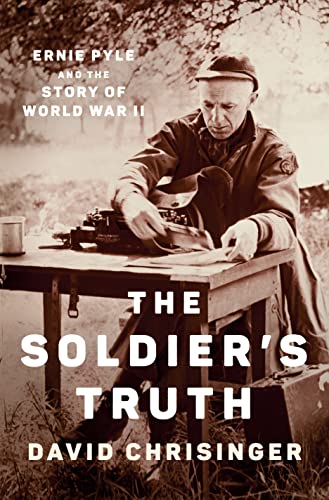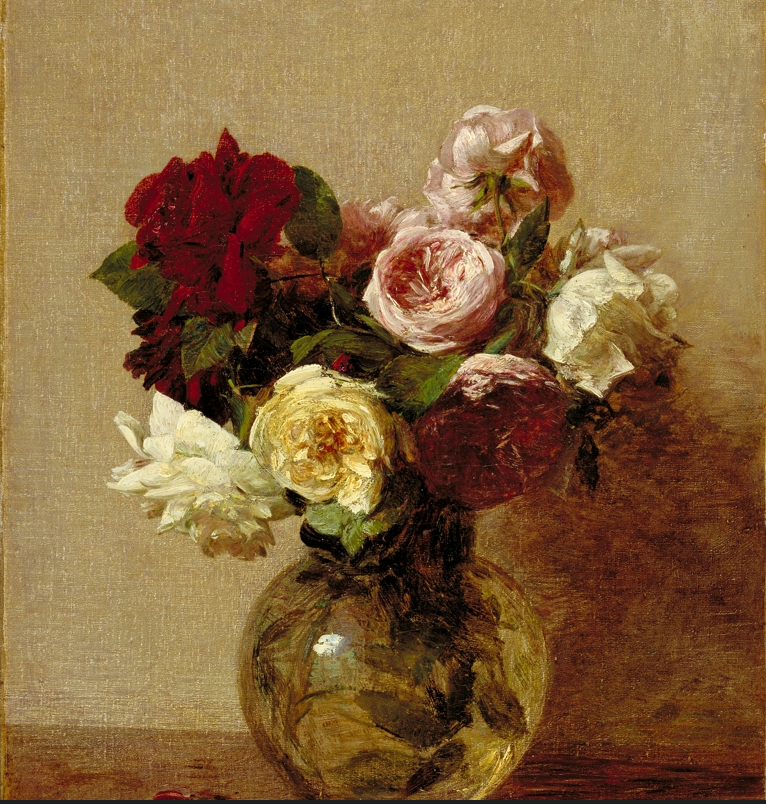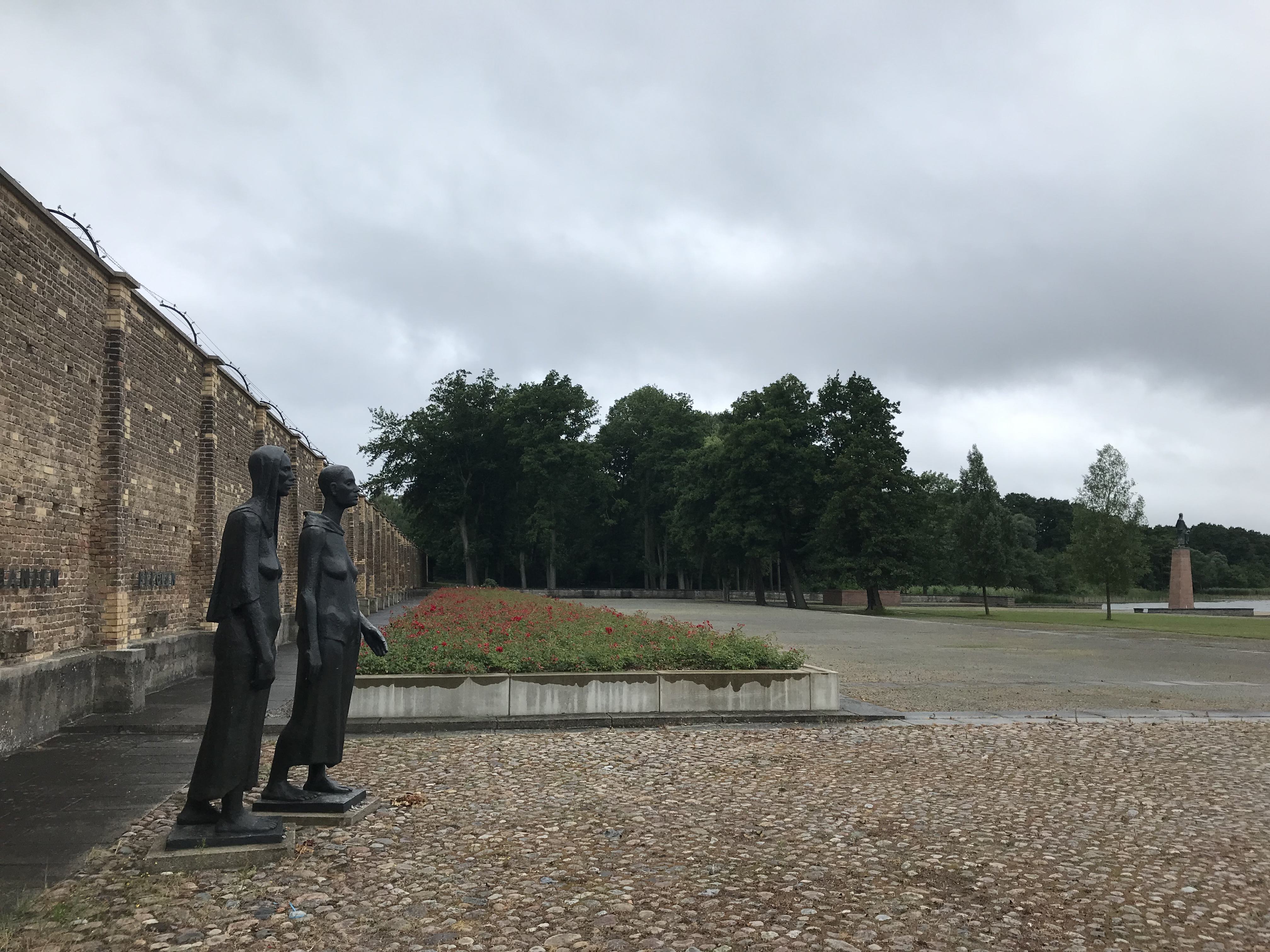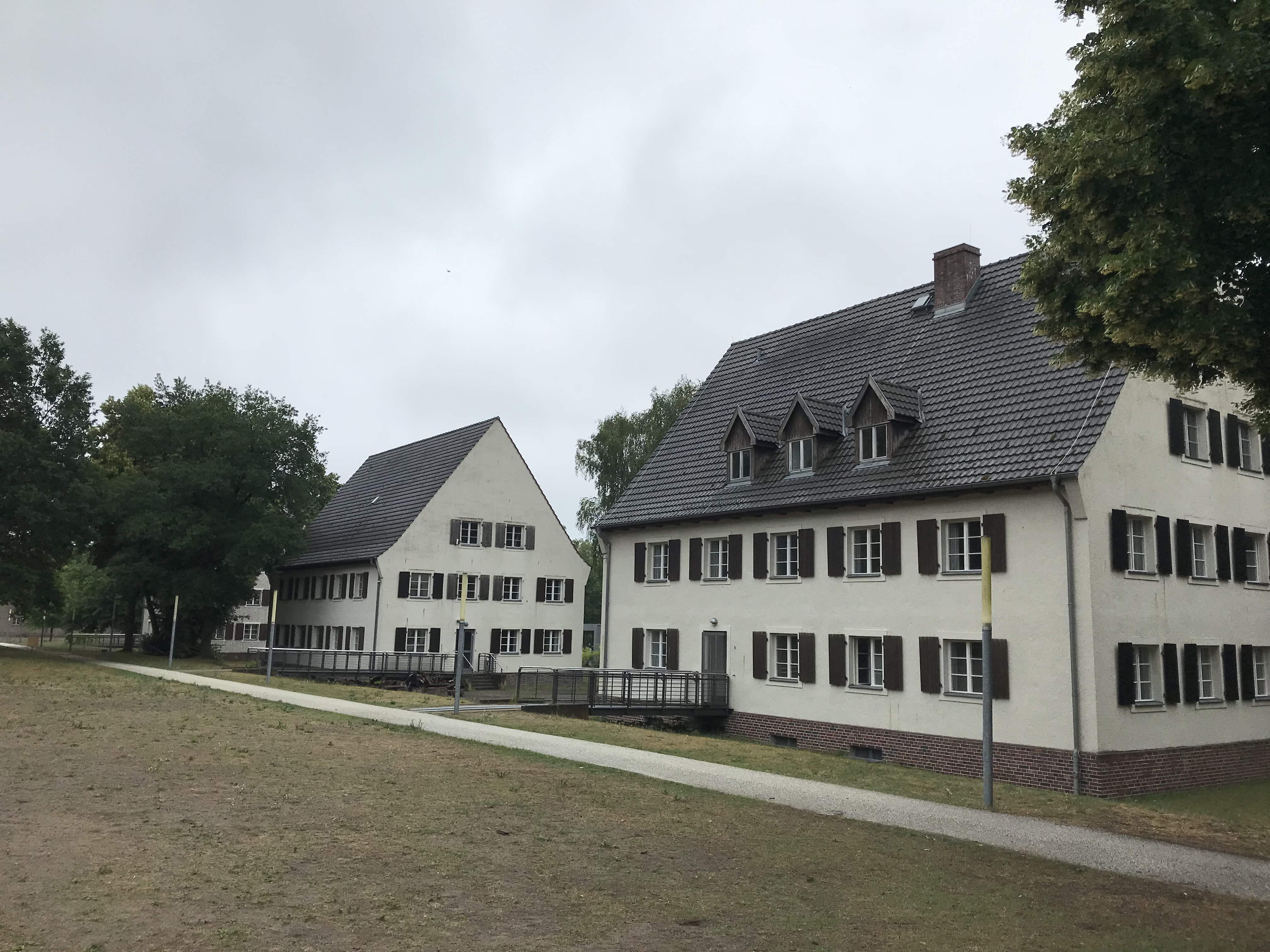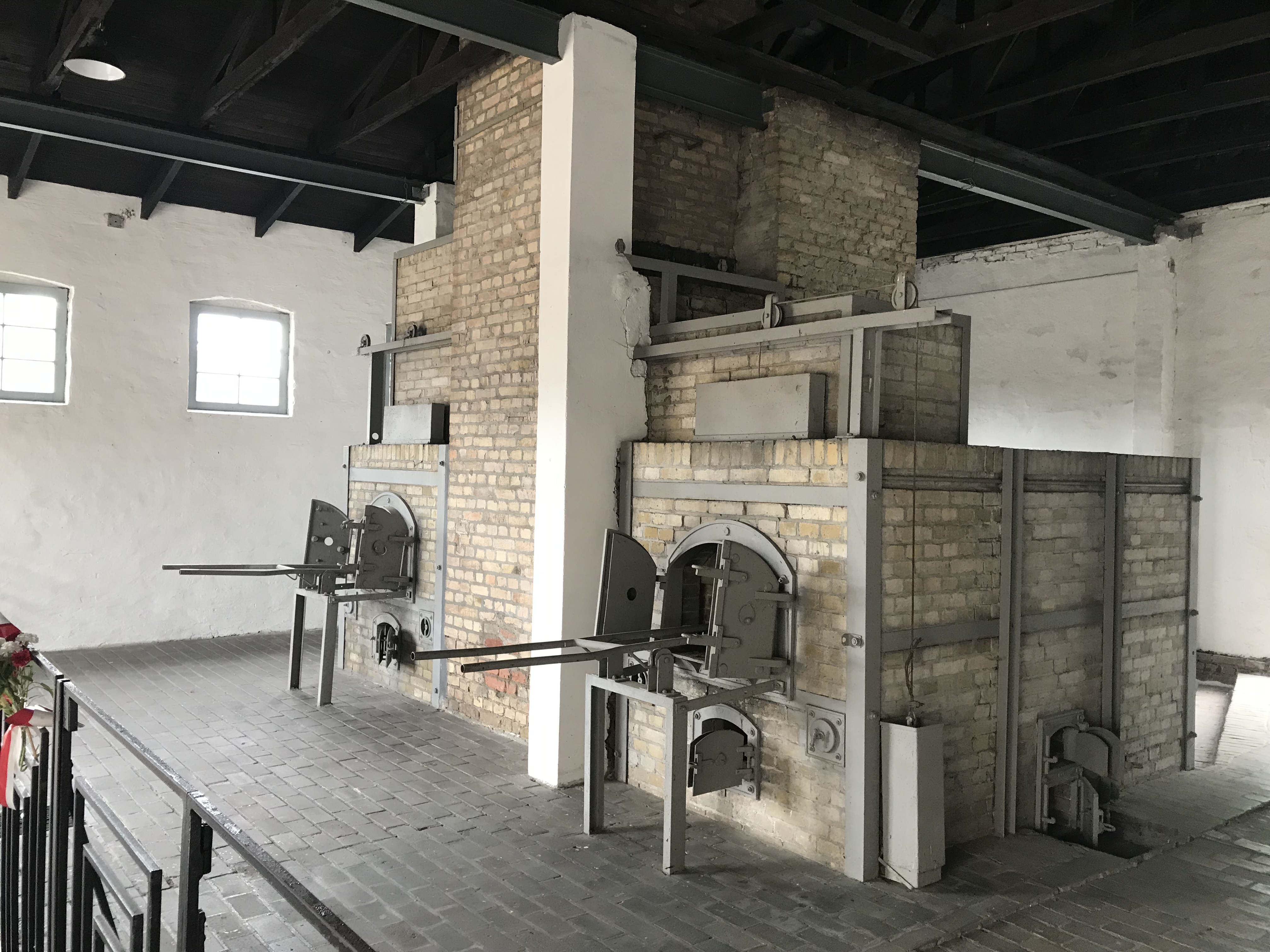New Review from Rachel Kambury: David Chrisinger’s “The Soldier’s Truth: Ernie Pyle and the Second World War”
The War of Little Things
A review of David Chrisinger’s The Soldier’s Truth: Ernie Pyle and the Story of World War II
“I’ve got something I want you to have,” Grandpa Art told me, apropos of nothing, “wait here.” Pre-double knee replacement, it took him some time to climb the stairs to the second floor of the moderately chintzy two-story house he shared with his wife, my Grandma Jo, in Delaware, Ohio. My dad—their eldest—and I had flown out from Oregon for 4th of July weekend that year, a rare trip to his home state for a visit with the grandparents, aunts, uncles, and cousins.
A deeply awkward teenager at the best of times, I was also deeply uncool at 15-16, and as such I had no issue leaving home if it meant getting to spend time with my only living grandfather. It certainly wasn’t a hardship: Arthur Kambury was a delight to be around. He was always quick with a funny story, a fascinating family anecdote, or a jazzy riff on his old trumpet. He loved to entertain people, especially family. His laugh was infectious, and I can still hear the whistling sibilance of his S’s when he spoke.
Our love for each other was born out of our relationship as granddaughter and grandfather, naturally, but it was deepened by our shared interest in World War II history. Unlike a lot of the men I’d already encountered in my young life who’d questioned, even interrogated, my sincere interest in the war, Grandpa Art never so much as blinked. It would be years before I truly understood how important that steadiness was to me, and how profound an expression of love it was on his part.
When he returned from his sun-drenched office on the second floor, soft shoes chafing against low-pile oatmeal colored carpet, Grandpa Art was smiling. Coming to a standstill in front of me at the dining room table where he’d left me in eager anticipation (what kid doesn’t love getting a present from their favorite grandparent?), he barely paused to catch his breath before holding out his gift to me.
“A book!” is what I think I said. Probably, since that’s my usual reaction to such a gift. (Honestly, I think my obsession with books is hereditary.) Grandpa Art certainly loved them. And I could tell he loved this book, if only because it was already so visibly worn, and it was one of the few books he ever gifted me—knowing, perhaps, that I wouldn’t need a lot of help growing my own personal library over my lifetime. But the way he handed it to me, the way he held my shoulder for a moment after, the way he talked to me about it, felt like I was being given the one book he thought I needed to own now, that he needed to give me himself, before I followed this path of study, however informal, any further.
Wrapped with librarian-level precision in crystal clear cellophane, the faded remnants of the brick red first edition hardcover dust jacket were still easy to read. The pages inside were yellow with age and probably smoke from my grandpa’s four-decade, four-pack-a-day smoking habit; the text was printed in columns of two, a hallmark of books printed during the war.
I was most struck, however, by the face on the cover looking over my left shoulder: Below a broad bald dome haloed by cotton whisps of white hair (features, I immediately thought, that closely resembled my own grandpa) was the disembodied head and neck of a middle-aged man who wore a furrowed expression of consternation above a thin-lipped open mouth, hovering large over a shadowy line of American soldiers, their helmeted heads dipped low, stretching backwards, shrinkingly, until they seemed to fall off the edge of the jacket and into space itself.
This was my introduction to Ernie Pyle.
***
Years after Grandpa Art gave me his first edition wartime copy of Pyle’s bestselling Brave Men, I jumped at the chance to receive a galley of David Chrisinger’s latest and, in a breathless ask to my fellow WBT editors, to write about this remarkable travel-memoir-meets-biography about that whip-thin chain-smoking Hoosier who told America as much of the unvarnished story of World War II as he humanly could (and as much as the war department’s censors would allow).
A prescient and engrossing story, Chrisinger intricately weaves moments of memoir and hard journalism with incredibly granular and well-rendered studies of Pyle’s life, the parts of war he witnessed, and the people he met, knew, and loved. This is history writing, which means these are rigid threads—I can begin to imagine the author caning a chair—and Chrisinger maneuvers them over and under each other with enviable deftness.
More importantly, he prioritizes them correctly: on the biographical relief map of the home front(s), mountains, valleys, and beachheads (“bitchheads,” as they were at times called by American infantrymen) of Ernie Pyle’s dynamic life, Chrisinger’s crisply written accounts of his own travels across North Africa and Western Europe rests like carefully laid cling film, transparent (this is a fairly straightforward narrative structure) but strong (I couldn’t put the book down, and not only because of personal bias).
Here, the author operates in the true spirit, as I understand it, of Ernie Pyle. He offers us a portrait, flawed and faceted, of a “middle-aged travel writer without any experience covering combat, the military, or foreign affairs.”
A man—nothing more, nothing less.
Ernest Taylor Pyle was born in Dana, Indiana in 1900, a farmer’s son; neither of Pyle’s parents had more than an 8thgrade education. A shy, bookish child among small-town sharecroppers, his world was comprised almost entirely of humble individuals on the blue-collar scale; grandiosity, one could argue, was not in his vocabulary. In time he picked up the grease pencil and began wending his way up and down and all around the United States, befriending “pilots…outside Washington, DC…lumberjacks in the Pacific Northwest…bellhops and bartenders…” many of whom would one day be fighting in the war Pyle reported on.
By the time Pyle stepped foot on Algerian soil, he had spent most of his life churning out slice-of-life columns for the local paper, a skillset that would serve him well on the frontlines and would make him the correspondent Americans came to trust most during the war. “It was his familiarity and kinship with ‘unimportant small people and small things,’ as a writer for Time put it in the summer of 1944, that would suddenly become enormously important to millions of readers when the American involvement in the war began.”
Indeed, it was Pyle whose “version of the war…became the version America chose to remember.” Some of Pyle’s contemporaries were quoted referring to him as “more of a propagandist” than a journalist, “a public relations man [who] sold a story about the war that omitted more truth than it espoused.”
But to the folks back home with family overseas, reports about generals and machinery and troop movements—the cold, hard facts of war—meant almost nothing. To them, Pyle’s approach to describing the war, “not the mode of strategic overview, but that of moral intuition” was far more valuable. As the author writes, “Americans at home needed [Pyle] to explain the war to them, and what life for their sons and husbands was really like. If those who made it home were ever going to find some semblance of peace, Pyle realized, the American people needed to be able to understand why their boys froze at the sound of trucks backfiring, why the smell of diesel or copper transported them back to some shell-pocked battlefield, why they were coarsened and reluctant to talk about all they endured. It was the least they could do.”
Of course, no biography of Ernie Pyle the man would be complete without the woman at the center of his life. Geraldine Elizabeth “Jerry” Siebolds, Pyle’s relationship with her, and their fascinating dynamic, rightfully takes up as much space in the book as Chrisinger or Pyle do. Many of the letters quoted throughout seem to be from those Pyle wrote to Jerry while overseas, and they feature some of the most transparent writing about the war coupled with some truly sweet expressions of love and devotion.
References also abound to what could be considered affairs, but in the context of Jerry and Ernie’s relationship take on the shape of what we now might consider an “open” marriage. Jerry struggled with severe mental illness (most likely a form of bipolar disorder), a kind I personally recognize all too well, and Chrisinger does a fine job of depicting it here without judgment. (I was moved to see the author include a note in the frontmatter mentioning references to suicide in the book; he also provides the relevant hotline(s) for those readers who might need them.)
Pyle himself only ever seems to express despair over Jerry’s health and discusses the other women in his life with her freely. They share in each other a depth of love and mutual respect that seems impossible to maintain, because it is—with Pyle constantly overseas out of his immovable sense of obligation to the “goddamn infantry” and Jerry’s alcoholism and drug abuse combined with her mental illness, the pair openly acknowledge in multiple letters that their relationship seems doomed no matter how much they wish it were otherwise. They divorce; they stay together. Ernie writes about war because he must, but also because it pays Jerry’s medical bills, which he also must do because he loves her more than he hates the war. The fame that comes with his columns is indulged only barely so that she never lacks for anything, including round-the-clock in-home care and multiple visits to psychiatric hospitals and sanitariums.
It’s a fraught, destructive relationship, but one that is also full of love and respect and understanding. In the hands of a lesser writer, it’d be all too easy to reduce Jerry to a troublesome housewife, a thorn on the stem of Pyle’s upwardly mobile rose, but Chrisinger understands that nothing is further from the truth, and the truth is abundant in the countless letters the couple sent back and forth to each other. It’s also in the letters Pyle wrote to the others in his life, including his editor, his friends, and his few but cherished lovers: Pyle was a deeply loyal, loving man, who could be both to a fault, and his relationship with Jerry was as inextricable as his relationship to the war. She supported him in his pursuit of telling Americans the truth about the war even as she spiraled out in his absence, and she held the fort back at their home in Albuquerque, New Mexico as long as she could, and when she couldn’t, he supported her in turn.
It’s Jerry who, in “a letter Ernie would never receive,” expresses the sentiment that so many other Americans felt toward the correspondent: “I am thankful for whatever it is that has made me feel through the years that as long as you were somewhere, nothing could be completely wrong—or hopeless.”
The two most important relationships in Pyle’s life, his wife and his war, have equal airtime in The Soldier’s Truth, and the book is an even more remarkable accomplishment for it.
Indeed, The Soldier’s Truth further adds to my theory that some of the best war history writing isn’t written by greyed British historians or the generals who spent their war miles behind the line, but by people who, like Pyle, have lived their lives close to the ground, or in some cases, in a foxhole a few feet below it. The bulk of my personal library that is just war history is comprised of [a not inconsiderable number of] books written by individuals exclusively about individuals. Both philosophically and in practice, I leave the minutiae of things like artillery technicalities, troop movements, combat tactics, and top-brass politics out of it—as much as is possible, anyways. Because the “underbelly” of war isn’t the underbelly at all, but the whole damn digestive system: it’s the people who fight, and the people who die, and the people they leave behind.
The reason we remember Ernie Pyle, and the reason I suspect my grandpa gave me that copy of Brave Men, is because Pyle understood this fact better than anyone. Better than any other correspondent reporting from the ETO, anyways.
So, if you’ve ever wanted a “worm’s eye view” history of the North African and European Theater of Operations, The Soldier’s Truth is your book. Put another way, speaking as someone who edits this stuff for a living, The Soldier’s Truth is a phenomenal example of the hybrid memoir—a book that roots a big subject in a personal narrative—at work. It is a course correction, the kind American classrooms desperately need, to say nothing of the general adult reading public. Perhaps most importantly (to me anyways), it’s a book that does what all genuinely good books with good writing in them do: it makes you think, and it makes you feel. It’s the kind of writing Pyle became famous for, became beloved for, the kind of writing we remember even after the fighting has long since ended.
Following Chrisinger across Tunisia, Sicily, mainland Italy, and France, we are taken on a vivid, emotional road trip across space as well as time: As I read scenes from the author’s time in Normandy, I was transported back to the four separate occasions I’ve visited that particular battlefield, most recently in 2019 for the 75th anniversary of D-Day, when I stood on a bluff similar to the one Chrisinger describes here, one overlooking the long, snaking French coastline from Pointe du Hoc to far-off Sword Beach.
In Tunisia, the author’s interpreter, Yomna, guides him as part of his tour of Kasserine Pass to a field of worn-down rubble that was once her family’s compound. It had been destroyed during the war, she explains, but “we can’t prove who did it, so we don’t know which country [Germany or the US] to ask for damages.” A few pages later, while sitting down for lunch, the author describes hearing what sound like far off explosions coming from the nearby Mount Chambi, which had become an al-Qaeda stronghold in recent years. “That’s the army,” Yomna tells him. “They must have spotted a terrorist.”
It’s the perfect encapsulation of my other theory, which is that most wars, especially one as big and all-encompassing and globally destructive and devastating as World War II, don’t end. In many cases, the fighting literally never stops, but is instead taken up by younger and younger generations as the older ones die out, or move up the ranks, or flee at their own risk. It’s not hard to draw a line, however jagged, from Pyle’s war to our own. Not if you look hard enough. The author himself draws the line all the way to the current war in Ukraine:
“War really was hell, no matter who told you different. But sometimes it was necessary, especially when some purported great power felt that its proper place in the world was to invade, conquer, and subjugate its sovereign neighbors because it had the power to do so, and because some intoxicating ahistorical claim to greatness that helped salve the humiliations wrought the last time the world went to war.”
I think anyone who’s read and genuinely appreciates Ernie Pyle’s work as a war correspondent will appreciate the tack Chrisinger took with his approach to covering the man’s life by retracing the long, arduous steps leading up to his death. We follow the author sweating, breathless, up mountains and quietly along sandy beaches in the middle of winter; we attempt to speak foreign languages and drink the local because it’s what you do when you travel, especially when the local is three fingers of a truly unique ’44 vintage, a “premixed calvados cocktail” some “enterprising residents…designed…which the Americans preferred to straight apple brandy.”
It’s the kind of detail Pyle would have loved (and a detail that literally made me shout, “You lucky bastard!” out loud when I read it).
Also to the author’s credit is his understanding that while it’s pointless judging historical characters against modern values, it behooves us who do write about those historical characters to point out their objective flaws regardless. In the case of Chrisinger with Pyle, the author does his due diligence in rendering the man honestly: Amid his worsening battle with what is now recognizably alcoholism, we see Pyle struggle with depression, his marriage, his resentful relationship to the fame that brought in the amount of money required to care for Jerry during his long absences, and his toxic attachment to the war, itself.
In one of the last chapters of the book, we read some of Pyle’s descriptions of the Japanese soldier and can easily recognize his renderings of them as being deeply racist; even after exposure to the enemy outside of combat, he struggles to adjust his thinking. “In Europe we felt our enemies, horrible and deadly as they were, were still people,” whereas “the Japanese are looked upon as something inhuman.” He would later describe them as “human enough to be afraid of us.” Sentiments that are perhaps not surprising given the sheer amount of explicitly racist and xenophobic propaganda the U.S. put out during the war, let alone the fact that there were still thousands of Japanese American citizens being forcibly interned on U.S. soil in 1945.
In all, Chrisinger offers us a detailed, unsparing, and empathetic—but never pitying—biography of a man who had plenty of chances to turn the job over to someone else but chose not to, kept choosing not to, because to do so in his mind would dishonor the doughboys, both living and dead, who’d come to see him as one of their own.
The combat scenes Chrisinger renders throughout The Soldier’s Truth embody this sentiment well. He relies almost exclusively on direct quotes and lines pulled from Pyle’s columns, veterans’ recollections, and postwar histories. Very rarely does he editorialize for the sake of it. But when he does, Chrisinger shines as a writer unto himself: One night in Italy, he writes, “The air bit a little. Not too sharply. The soothing sound of gentle surf massaging the sand was a comfort at first. Then, walking along the sea’s dying edge in the melancholy winter light, I thought about life on the beaches during that miserable winter of 1944, about young lives snuffed out capriciously. After nearly a half mile of walking, it struck me that life at Anzio was not separate from death; they were knit as tightly as the threads in a carpet.”
Or, in a beautifully restrained rendering of the first moments of the landings at Omaha Beach:
“As the first wave of landing craft drew close to shore, the deafening roar stopped, quickly replaced by German artillery rounds crashing into the pewter-colored water all around them. The flesh under the men’s sea-soaked uniforms prickled. That many of them would die was a matter of necessity. Which of them would die, exactly, was a matter of circumstance—and they knew it. So, they waited, barely daring to breathe.”
My favorite history books all have this in common: They all recognize, as Pyle did, that as ugly as war is, it is often marked by moments of the kind of exquisitely painful beauty that steals the breath from your lungs. Both should be written about in order to paint a more complete picture of what it is like to go to war. In Chrisinger’s case, these moments of beauty (his and Pyle’s blended description of flying over the Atlas Mountains at sunset comes to mind) are balanced, sometimes in the same sentence, with brutal renderings of men in combat or the aftermath of it that made the hair stand up on the back of my neck.
The author’s depiction of Jerry’s suicide attempt with a pair of scissors—a gift, he notes, from the Ringling Bros. and Barnum & Bailey Circus to Ernie years before—is harrowing, but not overly descriptive, as Chrisinger acutely understands the profound value of restraint when it comes to portraying such a thing on the page. (Jerry, a woman of wanderlust and immense intelligence and creativity, whom Ernie’s readers knew well as “That Girl,” died seven months after her husband did, of “acute uremic poisoning,” in November 1945.)
It’s only in the context of combat that Chrisinger lets the horror truly rear its head, and even then, he lets Pyle take the reins. In one of Pyle’s most famous columns, written in the immediate aftermath of D-Day, he wrote: “As I plowed out over the wet sand of the beach…I walked around what seemed to be a couple of pieces of driftwood sticking out of the sand. But they weren’t driftwood. They were a soldier’s two feet. He was completely covered by the shifting sands except for his feet. The toes of his G.I. shoes pointed toward the land he had come so far to see, and which he saw so briefly.” Later that summer, he attempted to describe myriad scenes after battles had moved on from an area, drafting line after anaphoric line:
“From the scattered green leaves and the fresh branches of trees still lying in the middle of the road.
From the wisps and coils of telephone wire, hanging brokenly from high poles and entwining across the roads.
From the gray, burned-powder rims of the shell craters in the gravel roads, their edges not yet smoothed by the pounding of military traffic.
From the little pools of blood on the roadside, blood that had only begun to congeal and turn black, and the punctured steel helmets lying nearby.”
By the time he left Jerry for the Pacific, we understand that Pyle had reached a critical breaking point as a man and as a correspondent. Exhausted, sickly, stuck, and missing Jerry terribly but needing to be away from her, he oscillated between hyper-productivity and complete collapse regularly as he hopped, island-to-island, from Guadalcanal to Guam to Okinawa with the First and Third Marine Divisions and the 77th Infantry Division, among others.
Alcohol became a mainstay of Pyle’s writerly tableau—if he was at his typewriter, he was probably smoking a cigarette with a drink close at hand. “Not even the end of the war, not even victory and that last trip home, would be able to bring back all the people killed or counteract the damage done to the war’s survivors,” Chrisinger writes of Pyle’s mindset toward the end of his life. “By the time the unconditional Allied victory was within grasp, Ernie had come to believe that there was simply no way the war could ever simply be a story with a happy ending.”
Indeed, one of the few detriments to a book about Ernie Pyle is knowing the ending at the start. The Allies win. Pyle is killed by a machine gun round to the head on the island of Ie Shima, during the Battle of Okinawa, in April 1945. In terms of narrative stakes, it’s about as anticlimactic as you can get. Chrisinger, to his credit and to the strengthening of an already strong narrative, embraces this fact of his subject, and it results in what I would classify as one of the finest obituaries to come out of this or any war involving the United States—a piece of writing that not only exemplifies who Ernie Pyle was in life, but underlines the importance of him as a citizen correspondent among citizen soldiers.
“Pyle was embraced by enlisted men, officers, and a huge civilian public as a voice who spoke for the common infantryman,” he writes. “With his traumas in Sicily, Italy, and France, he had, in essence, become one of them. After sharing so much of their experience, their pain and their purpose, he understood better than most how gravely war can alter the people who must see it and fight it and live it. He knew that many survivors would come home with damage that is profound, aching, and long lasting. It was a truth that he found hard or even impossible to communicate to his readers back home—and it’s a truth that is still difficult and troubling now, all these decades later.”
***
One of the many downsides of losing loved ones when you’re young, I realized recently, is this tendency to think of questions you wish you’d asked them in life but thought of too late. “Staircase wit,” or l’esprit de l’escalier; that moment when you think of the perfect response (usually a pithy one) to the person at the top of the stair’s words only when you’ve just reached the very bottom.
I have plenty of these moments, on a very regular basis, and the worst ones aren’t the witty rejoinders I wish I’d lobbed at this or that rude person, but the questions I wish I’d asked my grandpa while he was alive. Most of them are questions I was never brave enough to ask, despite knowing deep down that he would have been incredibly generous with his answers; toward the end of his life, Grandpa Art shared with me, during what would end up being one of our last phone conversations, the story of him shooting the shit with some buddies one afternoon during his time stationed in India. “I walked away for a minute,” he told me, meaning of course it could have been hours, but time can make even the strongest memories a little fickle, “and when I came back, they’d disappeared. I found out later they’d been roped into going to the Pacific, and I never saw them again.”
The subliminal, ghastly horror of it was in his voice, so I didn’t feel an immediate need to ask how the memory sat with him. I was simply honored to at last receive a piece of my grandpa’s war story, the true one, not just the one he’d spent his life burnishing into a series of charming anecdotes about trumpet playing and beer stealing and shooting off rounds into the air because he was young and bold and far from home (the last two, of course, being closely related). Both are true, in their own way, but measured by Pyle’s yardstick, only one touches on what it was actually like for the average American servicemember to be anywhere in the world during the war. And like so many who’ve seen war, my grandpa kept the darkest truths of that experience close to his chest, because how could anyone begin to understand?
Somehow, he knew I would. In his absence I try not to punish myself for not trusting that more. But I do wish I’d asked him their names, if he’d tried looking them up after the war; if he was scared about being sent to the Pacific, too, or if, like Pyle, he’d been resigned to it as a fact of his existence as a soldier in wartime. I would have loved to know how he felt when he found out Ernie Pyle died. If he, like Robert Capa, “drank himself stupid in silence,” or if he picked up his trumpet and played “Taps” while his fellow soldiers stood at attention and saluted the horizon, in the direction they knew Ernie Pyle, “the rail-thin son of an Indiana tenant farmer,” now lay dead.
Whatever he felt in the moment, however he mourned, perhaps it meant more to my grandpa that he’d found someone he could share Pyle with, even decades after the fact; they were both wordsmiths, after all, and war writers, ourselves a niche bunch, tend to recognize other war writers. Perhaps Grandpa Art giving me his timeworn copy of Brave Men was as much a gesture of that recognition as it was a lesson-by-proxy in writing about World War II, namely, in the only way that did it any justice.
As Pyle handwrote in his final, unpublished missive, a note found on his body before he was buried: “To you at home they are columns of figures, or he is a near one who went away and just didn’t come back. You didn’t see him lying so grotesque and pasty beside the gravel road in France. We saw him, saw him by the multiple thousands. That’s the difference.” Shadowed men all in a line, falling off the edge of the dust jacket.
Look harder, I now realize Pyle’s face hovering above them seems to say: Do not look away. This is not a story with a happy ending. How could it be? It is a war story. Tell it anyways.

